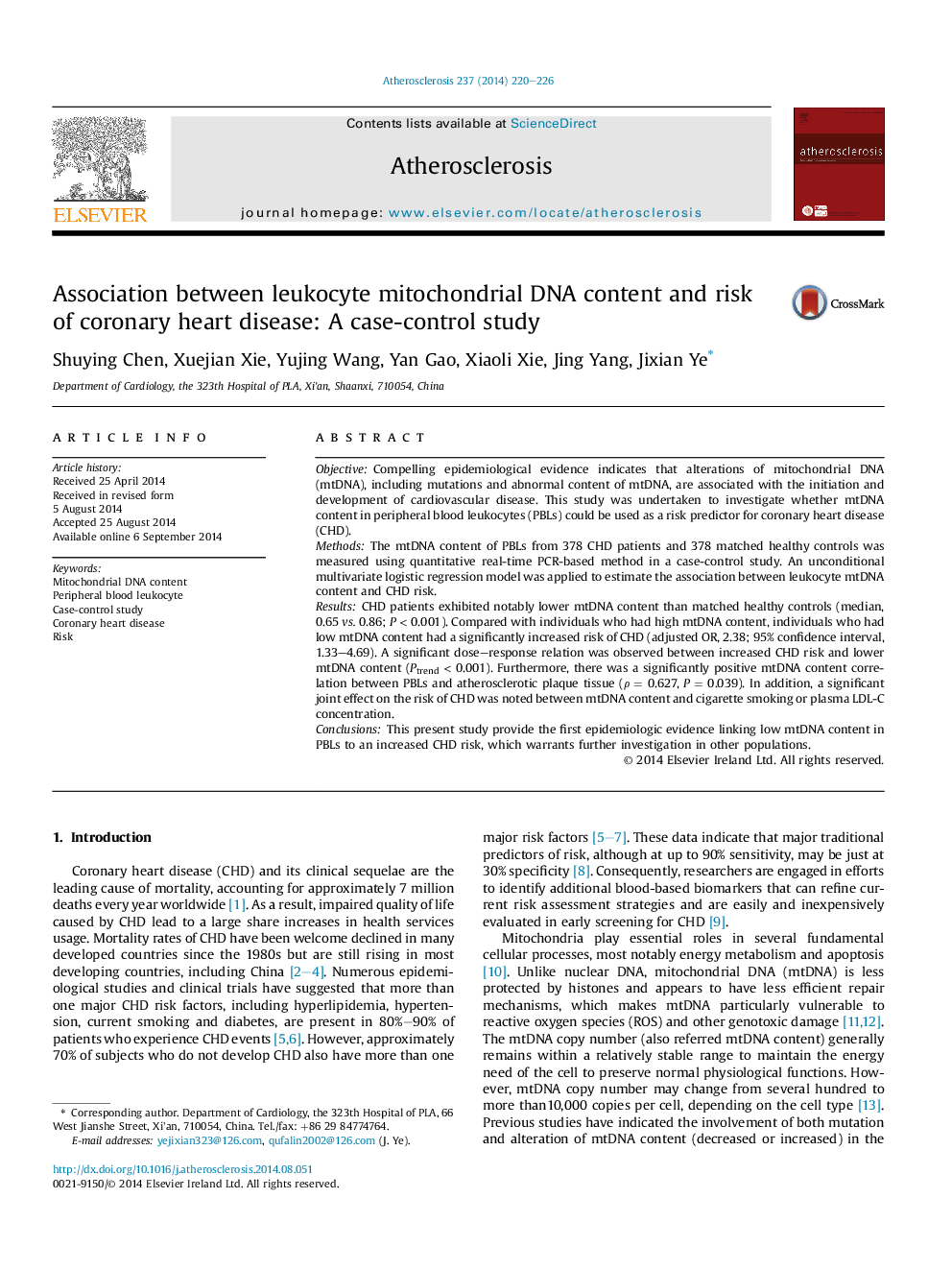| Article ID | Journal | Published Year | Pages | File Type |
|---|---|---|---|---|
| 5945111 | Atherosclerosis | 2014 | 7 Pages |
â¢We observed that leukocyte mtDNA content was positively associated with CHD risk.â¢A significant dose-response relationship exists between mtDNA content and CHD risk.â¢A positive mtDNA content correlation exists between PBL and atherosclerotic plaque.â¢We also found joint effects on CHD risk between mtDNA content and smoking/LDL-C level.
ObjectiveCompelling epidemiological evidence indicates that alterations of mitochondrial DNA (mtDNA), including mutations and abnormal content of mtDNA, are associated with the initiation and development of cardiovascular disease. This study was undertaken to investigate whether mtDNA content in peripheral blood leukocytes (PBLs) could be used as a risk predictor for coronary heart disease (CHD).MethodsThe mtDNA content of PBLs from 378 CHD patients and 378 matched healthy controls was measured using quantitative real-time PCR-based method in a case-control study. An unconditional multivariate logistic regression model was applied to estimate the association between leukocyte mtDNA content and CHD risk.ResultsCHD patients exhibited notably lower mtDNA content than matched healthy controls (median, 0.65 vs. 0.86; P < 0.001). Compared with individuals who had high mtDNA content, individuals who had low mtDNA content had a significantly increased risk of CHD (adjusted OR, 2.38; 95% confidence interval, 1.33-4.69). A significant dose-response relation was observed between increased CHD risk and lower mtDNA content (Ptrend < 0.001). Furthermore, there was a significantly positive mtDNA content correlation between PBLs and atherosclerotic plaque tissue (Ï = 0.627, P = 0.039). In addition, a significant joint effect on the risk of CHD was noted between mtDNA content and cigarette smoking or plasma LDL-C concentration.ConclusionsThis present study provide the first epidemiologic evidence linking low mtDNA content in PBLs to an increased CHD risk, which warrants further investigation in other populations.
